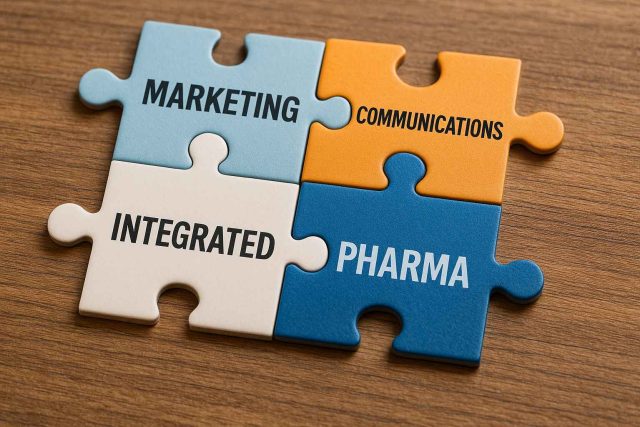Introduction
In today’s complex healthcare environment, what does it truly mean to practice Integrated Marketing Communications in pharma? For brands like Keytruda, Humira, and Ozempic, success isn’t just about having a powerful product. It’s about delivering consistent, engaging messages across a fragmented media landscape. Much like a symphony that requires every instrument to be in sync, pharma marketers must harmonize every touchpoint to resonate with both healthcare professionals and patients.
This article explores how Integrated Marketing Communications (IMC) drives brand cohesion, regulatory clarity, and market growth within the pharmaceutical industry.
Table of Contents
- Defining Integrated Marketing Communications in Pharma
- Why IMC is Essential for Pharma Brands
- Building a Compliant and Cohesive IMC Strategy
- Future Trends and the Role of Digital Integration
Defining Integrated Marketing Communications in Pharma
Integrated Marketing Communications refers to the strategic alignment of messaging and branding across all marketing channels and stakeholder touchpoints. For pharmaceutical companies, this means synchronizing communication across advertising, medical affairs, PR, social media, digital platforms, and sales.
IMC vs. Traditional Marketing
Unlike siloed traditional marketing tactics, IMC focuses on delivering a consistent message with a unified voice. Whether a physician sees a journal ad, a webinar invite, or a rep’s email, the messaging must be complementary and clearly linked to the brand’s positioning.
Tailoring for Multiple Audiences
Pharma marketers must address diverse stakeholders: doctors, patients, caregivers, payers, and regulators. An effective IMC approach ensures these messages align, even when tailored to different needs.
Case in Point: Dupixent
Sanofi and Regeneron’s rollout of Dupixent integrated omnichannel communications with physician education, patient testimonials, and payor engagement—illustrating how IMC increases market uptake and brand trust.
Why IMC is Essential for Pharma Brands
With healthcare communication becoming more fragmented, IMC is not just helpful—it’s critical.
Boosting Brand Recall and Trust
Repetition breeds recognition. When audiences see a brand consistently represented across platforms, it strengthens trust. This is especially crucial in pharma, where credibility can make or break a prescription decision.
Streamlining Regulatory Compliance
In a tightly regulated industry, inconsistent messaging can raise red flags. A well-structured IMC approach centralizes review processes, helping brands avoid legal missteps.
Enhancing ROI Across Channels
Coordinated campaigns eliminate waste. When all marketing efforts align, the return on investment improves. A unified campaign ensures that digital ads, sales reps, and content marketing reinforce each other rather than compete.
Strengthening Omnichannel Execution
Omnichannel marketing isn’t just a buzzword. It requires cohesive messaging across touchpoints—from mobile alerts to in-office brochures. IMC brings this cohesion to life.
To learn more about the strategic value of omnichannel alignment, explore Pharma Marketing Network’s featured insights.
Building a Compliant and Cohesive IMC Strategy
Developing a successful Integrated Marketing Communications strategy in pharma involves intentional planning, cross-functional collaboration, and tech-enabled execution.
Conduct a Full Channel Audit
Start by identifying all existing brand touchpoints. Are messages aligned across channels? Are sales reps, medical affairs, and media teams working from the same playbook?
Develop Unified Brand Messaging
Create a core message matrix that distills the brand essence and tailors it to each audience. This framework should guide all content—from social posts to CME materials.
Foster Internal Collaboration
IMC only works when departments break down silos. Schedule regular alignment meetings across teams to maintain coherence. Shared performance dashboards can track message consistency and engagement.
Use Digital Tools to Streamline Compliance
Platforms like Aprimo and Veeva Vault PromoMats help brands create, review, and deploy content while maintaining regulatory integrity. These systems are invaluable for speeding up go-to-market timelines.
Example: Keytruda’s Multichannel Strategy
Merck’s Keytruda campaign seamlessly combined patient advocacy, HCP education, and market access strategy—all guided by a unified brand voice.
Future Trends and the Role of Digital Integration
The future of Integrated Marketing Communications in pharma lies in its digital transformation. As technology reshapes how we engage, pharma must stay ahead.
AI and Predictive Analytics
Artificial intelligence can personalize IMC campaigns based on behavior, location, and preferences. Predictive analytics enhances segmentation and targeting, making campaigns more precise.
Rise of Conversational Marketing
With tools like chatbots and voice search, conversational marketing is becoming an extension of IMC. Pharma brands can use these tools to continue the customer journey in a compliant, scalable way.
Connected Health Ecosystems
Smart devices, health apps, and EHR integrations are creating more data-rich environments. IMC must adapt to engage patients and HCPs through these evolving digital ecosystems.
Digital Ad Solutions with Pharma Compliance
Solutions like eHealthcare Solutions provide targeted, HIPAA-compliant advertising capabilities to support IMC strategies that reach the right audience at the right moment.
Conclusion
Integrated Marketing Communications is more than a marketing strategy—it’s a necessity in today’s pharmaceutical marketplace. It ensures alignment, efficiency, and impact in a world where attention is fractured and compliance is key. Pharma brands that embrace IMC don’t just communicate better; they build trust, drive engagement, and accelerate growth.
To see how others are leading the charge, visit Pharma Marketing Network and explore real-world pharma marketing examples.
Frequently Asked Questions (FAQs)
What is Integrated Marketing Communications in pharma?
IMC in pharma refers to delivering consistent and unified brand messaging across all stakeholder touchpoints, including patients, HCPs, and payers.
Why is IMC important for pharmaceutical companies?
IMC boosts brand trust, enhances compliance, improves ROI, and creates a seamless omnichannel experience for all audiences.
How does IMC support regulatory compliance?
By centralizing message creation and review, IMC reduces the risk of non-compliant communications and ensures every message meets legal standards.
What are examples of IMC in pharma?
Campaigns from Dupixent, Keytruda, and Ozempic illustrate how IMC integrates digital, print, and field force communications.
What tools help with pharma IMC implementation?
Tools like Veeva Vault PromoMats and Aprimo assist with message alignment, regulatory review, and streamlined content deployment.
Disclaimer
This content is not medical advice. For any health issues, always consult a healthcare professional. In an emergency, call 911 or your local emergency services.
